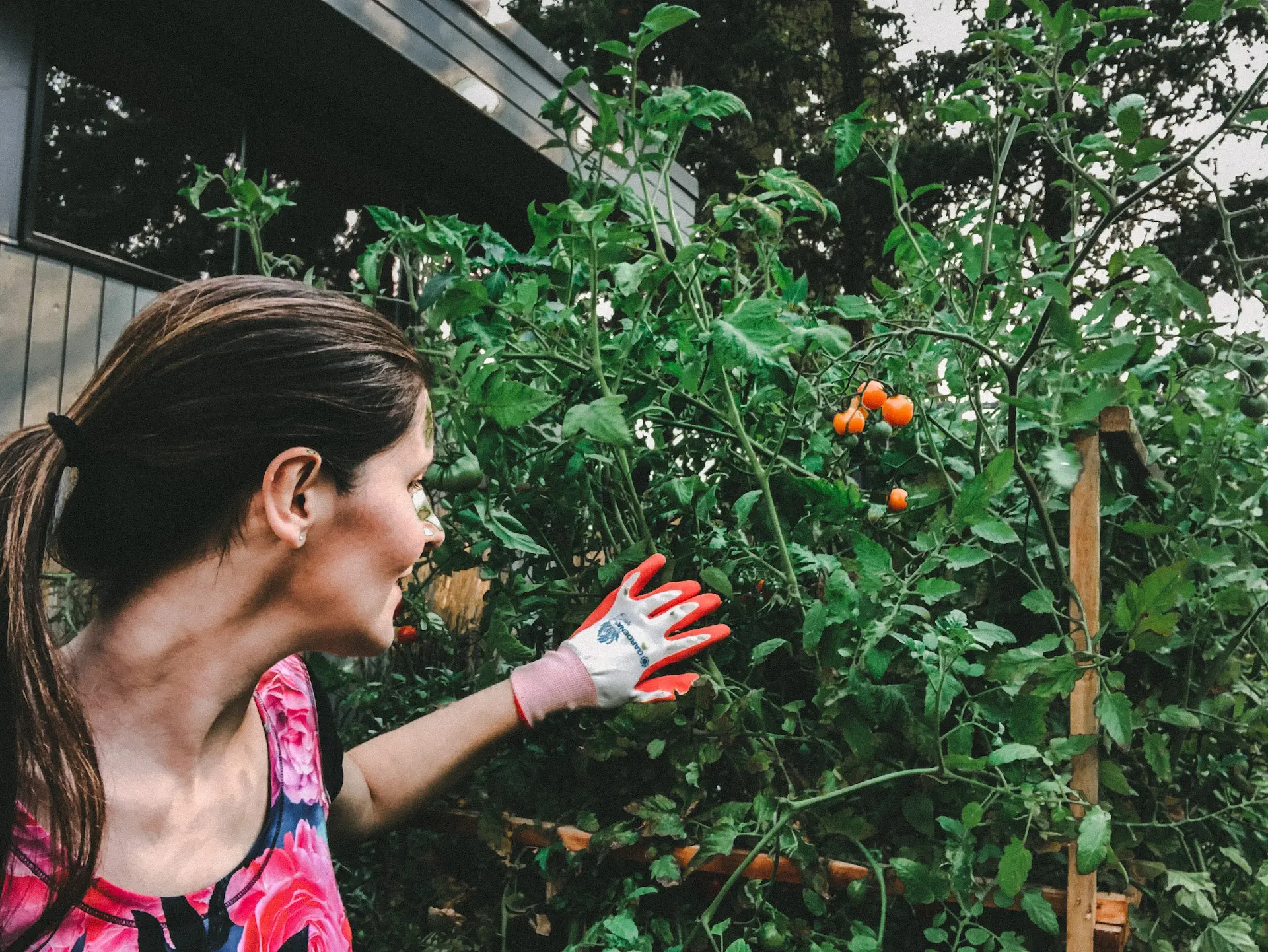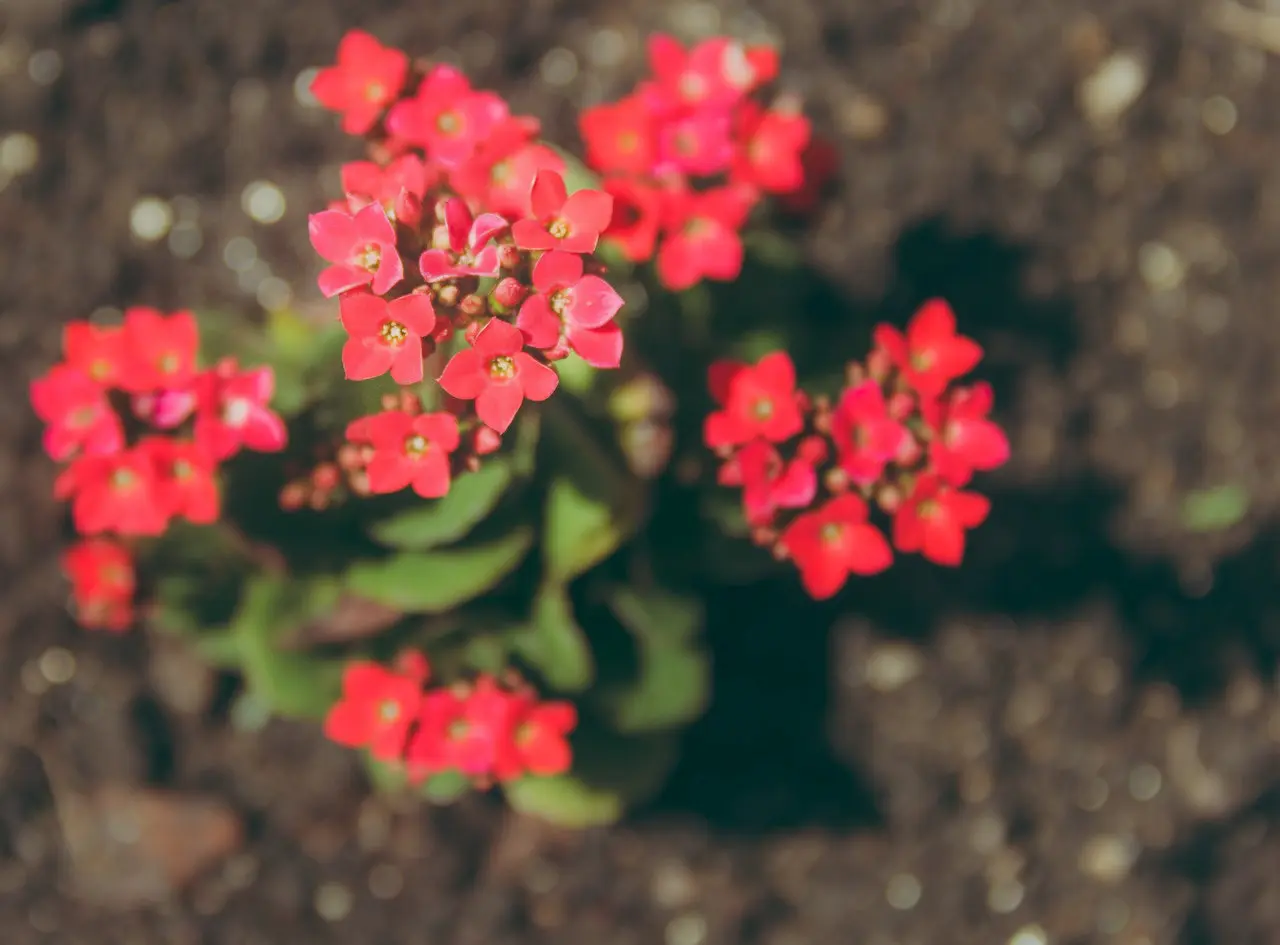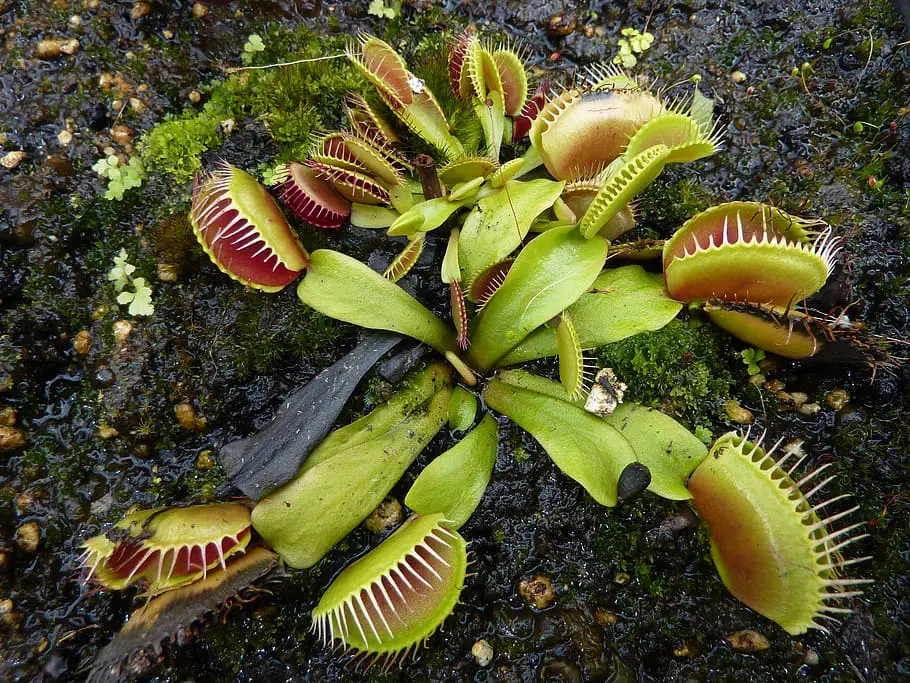This post contains affiliate links. If you buy something from one of our links we may earn a commission. Thanks
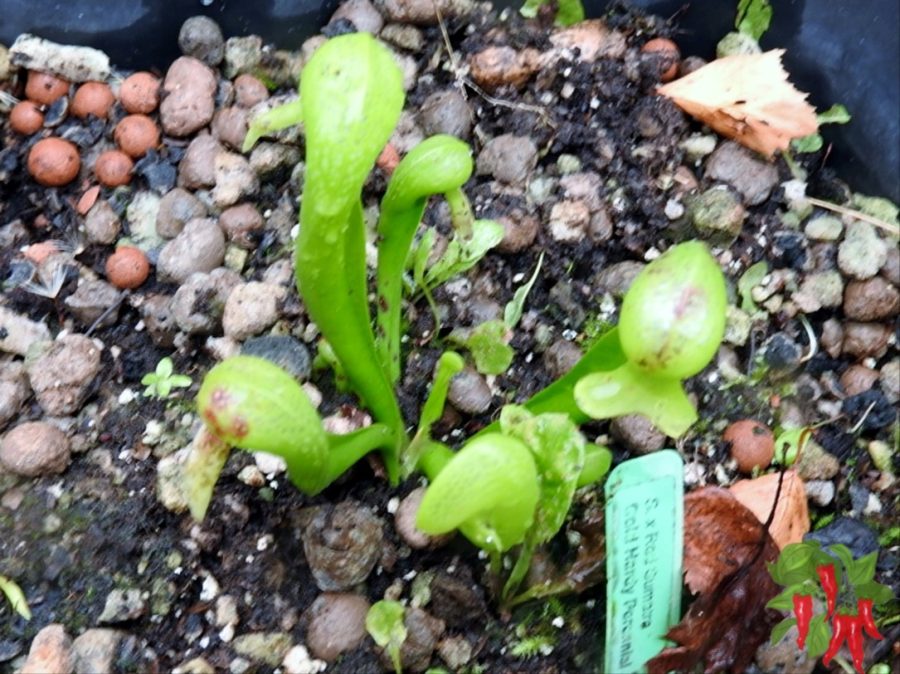
Looking to dive into the fascinating world of carnivorous plants? Learn how to propagate carnivorous plants with our comprehensive guide.
Carnivorous Plants Key Takeaways:
- To propagate carnivorous plants, use stem cuttings, leaf pullings, or seed propagation.
- Place cuttings or pullings in peat moss, ensuring high humidity with a plastic bag.
- For seeds, sow them in a mix of live green Sphagnum and sand.
- Always use distilled water, and provide indirect light for optimal growth.
Propagating carnivorous plants is not just an engaging pastime; it’s a journey into the intricate world of some of nature’s most fascinating botanical wonders.
These plants, which have developed the remarkable ability to derive nutrients from trapping and consuming insects, have always intrigued plant lovers.
By learning how to propagate them, we not only aid in their conservation but also add a great addition to our plant collection.
The propagation can be achieved in different ways, from using stem cuttings to seed propagation, and each method offers its unique challenges and rewards.
How to Propagate Carnivorous Plants
Ever wondered how to propagate carnivorous plants? Well, you’re in luck! Our comprehensive guide is here to walk you through the ins and outs of turning one Venus Flytrap into a whole garden of meat-eating marvels.
Carnivorous plants have long fascinated botanists, hobbyists, and even those with a casual interest in gardening.
The ability to propagate these unique plants not only helps in their conservation but also offers an intriguing project for plant enthusiasts.
This article will explore the various methods of propagation, from seeds to tissue culture, and why it’s an essential skill for anyone interested in carnivorous plants.
Why Propagate Carnivorous Plants?
Understanding the reasons behind propagating carnivorous plants can offer insights into their unique biology and how we can help these fascinating species thrive.
Natural Habitat Challenges
Carnivorous plants often grow in challenging environments like bogs, where natural events can disrupt their growth.
Propagation helps these plants survive and spread in such conditions.
Benefits of Vegetative Reproduction
Vegetative propagation allows for quicker growth and reproduction, helping the plants to colonize new areas more efficiently.
Economic Benefits
For those who cultivate these plants, propagation can also have economic benefits.
Whether you’re looking to sell or trade, multiplying your carnivorous plants can be financially rewarding.
Methods of Propagation
Understanding the various methods of propagating carnivorous plants can help you choose the best approach for your specific needs.
Seeds
• Seed Size and Growth Rate: Carnivorous plant seeds are generally small and slow-growing, making them less ideal for quick propagation.
• Ideal Medium for Seedlings: A mixture of live green Sphagnum and clean, washed sand works best for seedlings.
• Stratification Process: Seeds that ripen in the fall require a period of cold, damp stratification.
• Sowing Techniques: Sow the seeds directly on the surface of the medium, avoiding overcrowding.
False Vivipary
False vivipary, also known as “pseudovivipary,” is a form of asexual reproduction in plants where new plantlets develop from specialized structures, often at the flower spike or inflorescence, instead of from seeds.
This is different from true vivipary, where seeds germinate while still attached to the parent plant.
In false vivipary, the plantlets grow directly from the parent plant’s tissues and can eventually be separated to grow independently.
In the context of carnivorous plants, false vivipary can occur in species like the Venus Flytrap and sundews.
When the plantlet develops roots, it can be carefully removed and transplanted into a suitable soil mixture for further growth.
This method of propagation allows for the rapid spread of the plant without the need for seed germination, making it a useful technique for both natural survival and cultivation.
Plants that Exhibit False Vivipary:
This method is common in Venus Flytraps and sundews.
How to Transplant Plantlets: Once the plantlet develops roots, it can be carefully removed and transplanted.
Natural Leaf Budding
Natural leaf budding is a fascinating form of asexual reproduction where new plants grow from the leaves of the parent plant.
Plants Suitable for Leaf Budding
Butterworts and sundews are prime candidates for this method. These plants naturally produce buds on their leaves, which eventually grow into independent plantlets.
When to Separate Buds
The key to successful separation is timing. Wait until the buds have developed their own roots and leaves before gently removing them from the parent plant. This ensures that the new plantlet has the best chance of survival.
Stolons
Stolons are horizontal stems that grow above the soil and produce new plants at their tips.
Example: Cobra Lily
The Cobra Lily is well-known for developing plantlets along its stolons or runners, making it an excellent example of this propagation method.
When to Cut Stolons
The best time to cut stolons is when the new plantlets have developed their own roots. This ensures that they can survive and grow independently once separated from the parent plant.
Rhizome Budding
Rhizome budding involves the growth of new plants from the underground stems of the parent plant.
Suitable Plants for Rhizome Budding
Many pitcher plants propagate naturally through rhizome budding, making it a popular method for these species.
Care After Separation
Once the new plantlets are separated, they require the same care as mature plants, including appropriate soil, light, and water conditions.
Rhizome Cuttings
This method involves cutting sections of the rhizome and planting them separately.
Procedure
Use a clean razor blade to make perpendicular cuts into a large, mature rhizome.
This exposes growth nodes where new plants can develop.
Suitable Plants
Pitcher plants are particularly well-suited for this method of propagation.
Aftercare
After making the cuts, new growth buds will appear. Once these buds develop roots, they can be separated and planted individually.
Leaf Cuttings
Leaf cuttings involve removing a leaf from the parent plant and using it to grow a new plant.
Procedure
Cut off a healthy leaf at the base and place it on a bed of moist Sphagnum moss.
Suitable Plants
Sundews are ideal for this method, and it also works moderately well for butterworts.
Best Season for Leaf Cuttings
Early spring is the most suitable time for taking leaf cuttings, as this is when the parent plant is most vigorous.
Rhizome Divisions
This method involves dividing the rhizome into sections and planting them separately.
Procedure
Rhizomes can be cut into one-inch sections using a clean, sharp blade.
Suitable Plants
Pitcher plants are particularly effective for this method.
Root Care
Be cautious not to damage the roots during the cutting process, as this can hinder the plant’s ability to grow.
Decapitation
Decapitation involves cutting off the top of the plant to encourage new growth.
Suitable Plants
Many sundews can be propagated this way, as they have the ability to regenerate after being cut.
Recovery Time
The plant will take some time to regenerate roots and grow anew, so patience is key.
Tissue Culture
Tissue culture is a more advanced method of propagation.
Brief Overview
This involves growing new plants from plant tissue in a sterile environment.
Complexity and Requirements
Tissue culture is complex and requires specialized equipment like a laminar flow hood and sterilization tools.
Ethical Considerations
This method raises questions about the ethics of cloning plants, as it allows for the mass production of genetically identical plants.
Key Propagation Techniques and Tips
Bagging Method
One most efficient ways to maintain high humidity, essential for many propagation methods, is to use a plastic bag.
This approach encapsulates the plant or cutting in its micro-environment, ensuring optimal moisture levels.
Stem and Leaf Methods
Stem cuttings and leaf pullings are among the simplest ways to propagate many carnivorous plants.
When dealing with nepenthes pitcher plants or commonly referred to as monkey cup plant, taking pitcher plant cuttings from the main stem often results in successful propagation.
On the other hand, leaf pullings work wonders with plants like the venus fly trap.
Soil Preparation
The type of substrate used can significantly impact the germination rate.
Peat moss is an excellent choice for many carnivorous plants, given its nutrient-poor composition.
However, always ensure the medium remains moist.
Using distilled water is crucial as tap water may contain minerals harmful to these plants.
Light and Positioning
Never underestimate the power of direct sunlight. However, many carnivorous plants prefer indirect light.
Finding a sunny spot that doesn’t expose the plants to harsh midday rays is crucial.
Monitor the hours of sunlight they receive daily and ensure they don’t get more than they can handle.
Mother Plants and Separation
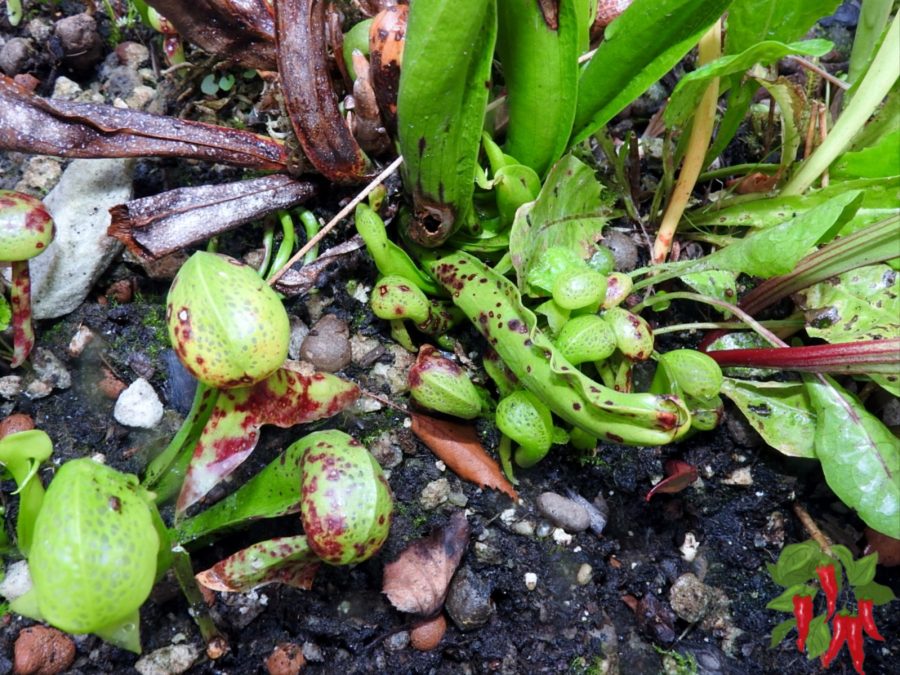
The mother plant plays a pivotal role in vegetative propagation.
Whether you’re taking root cuttings or dividing the own root system of plants, ensuring the mother plant remains healthy can make a huge difference in the survival rate.
Special Considerations
Some plants, like the tropical pitcher plant or the intriguing Nepenthes species, have ideal growing conditions that must be met for successful propagation.
It’s a good idea to research individual species requirements, from high humidity to warm temperatures.
On the other hand, sarracenia purpurea and sarracenia species, native to North America, might have slightly different needs.
Challenges in Propagation
It’s not always a walk in the park. The biggest challenge often comes from ensuring the ideal conditions are met, from providing just much water without overwatering to ensuring the bottom of the pot has adequate drainage.
Moreover, some plants, like drosera capensis, may take a long time before showing any new shoots or new leaves.
Propagation FAQs
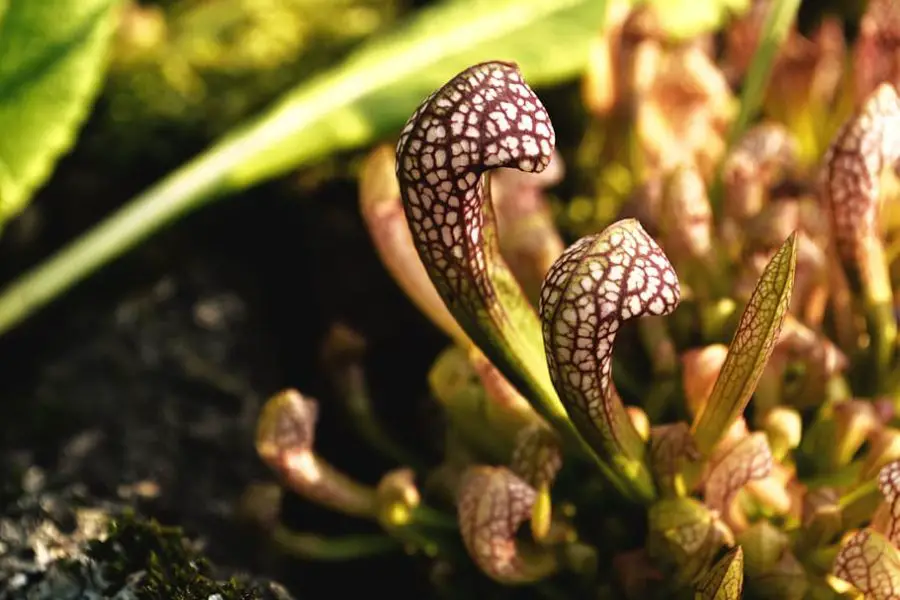
Got questions? We’ve got answers! When it comes to figuring out how to propagate carnivorous plants, we know you might have a few queries.
So, we’ve compiled a handy FAQ section to tackle some of the most common questions you might have. Let’s dive in!
Q: What is the most successful carnivorous plant for propagation?
A: Sundews take the crown for being the most successful carnivorous plants for propagation.
They’re a favorite among hobbyists because of their quick germination and rapid growth rate, making them ideal for those who are new to the world of carnivorous plants.
Q: What is the fastest-growing carnivorous plant?
A: If speed is what you’re after, look no further than sundews.
These fascinating plants can germinate within a few days or weeks and even flower within a few months, making them the Usain Bolt of the carnivorous plant world.
Q: How do you propagate carnivorous plants from seeds?
A: To propagate from seeds, you’ll want to sow them directly onto a specially prepared medium.
This usually consists of live green Sphagnum mixed with clean, washed sand.
Make sure the medium is soaking wet and place the seeded pots in slightly filtered sunlight for best results.
Q: Can you propagate carnivorous plants indoors?
A: Absolutely, you can! Many methods of propagation, such as leaf cuttings and tissue culture, can be successfully carried out indoors.
Just make sure to provide the right growing conditions, like humidity and light, to ensure your plants thrive.
Q: What are the common mistakes in propagating carnivorous plants?
A: Ah, the pitfalls! Overcrowding seeds is a big no-no, as is using an improper medium.
Both can lead to poor germination and growth. Always follow specific guidelines for the type of plant you’re propagating to avoid these common mistakes.
Wrapping Up: Propagation’s Reward
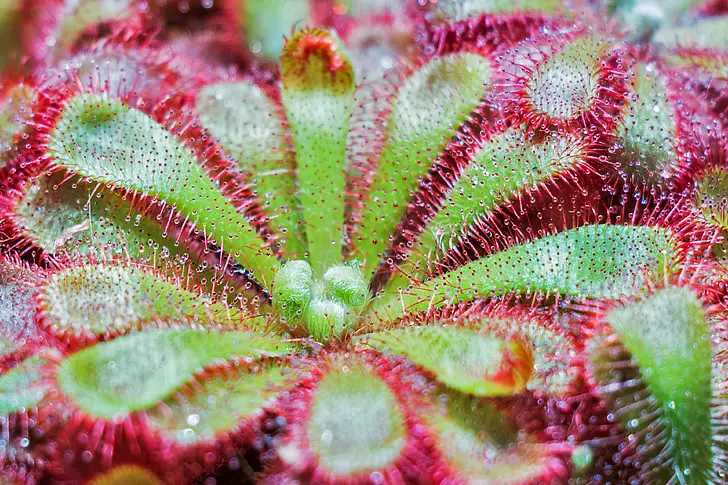
After investing time and patience, watching those new pitcher plants or seeing the colorful pitchers of a monkey cup plant grow is immensely satisfying.
Whether you’re propagating the trumpet pitcher plant, exploring the different ways of growing a climbing plant from Southeast Asia, or simply expanding your collection, the results are always rewarding.
Providing proper care ensures these unique plants flourish. Over time, you’ll find that mastering the art of propagation not only adds beauty to your garden or indoor space but also brings the satisfaction of contributing to the conservation of these marvelous species.
Understanding the various methods of propagating carnivorous plants is not just an interesting hobby but also a vital skill for anyone serious about the conservation and cultivation of these unique species.
The Role of Propagation in Conservation
One of the most compelling reasons to learn about propagation is its role in conservation.
Many carnivorous plants are endangered or threatened, and propagation can help increase their numbers and preserve their natural habitats.
By mastering these techniques, you can contribute to conservation efforts and help these fascinating plants thrive for future generations.
The Joy of Experimentation
Another exciting aspect of propagation is the joy of experimentation.
Whether you’re a beginner or an experienced grower, the world of carnivorous plant propagation offers endless opportunities for learning and discovery.
You can experiment with different methods, plants, and conditions, refining your skills and perhaps even making new discoveries along the way. So, why not get started today?









